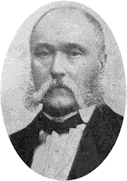Schlaraffia
This article has an unclear citation style. (September 2018) |
This article includes a list of general references, but it remains largely unverified because it lacks sufficient corresponding inline citations. (September 2018) |
Schlaraffia is a worldwide German-speaking society founded in Prague (then Austrian Empire) in 1859 with a pledge of friendship, art and humor.

The Schlaraffen, an exclusively MALE organisation (many men of a mellower age and in secure positions), meet in midwinter (1 October – 30 April in northern hemisphere) once per week in their castle (equipped in the style of a knight's tavern from the Middle Ages) for "Sippungen" (gatherings which take place in the fixed ceremonial form of a knight's play). In doing so, everyday life is satirised as well as kept alive through recitations of literary and musical forms. An antiquated language with its own vernacular for everyday things (Schlaraffen Latin — for example; "powder pot" for tobacco pipe, "gasoline horse" for car, "castle monster" for mother-in-law) gives the Sippungen their own humorous note. The approximately 280 "" (local clubs) stay in close contact with one another. Each Schlaraffe is always welcome in every Reych in the world.
Reychs currently exist in Germany, Austria, Switzerland, Italy, Spain, France, Belgium, Sweden, the United States, Canada, Mexico, Venezuela, Colombia, Ecuador, Brazil, Argentina, Thailand, South Africa, and Australia. The total number of Schlaraffen amounts to about 10,000. New members must be introduced by a Schlaraffe (godfather), complete a probationary period before a general vote is recorded, and start their career as knave, which leads from the position of squire to knight.
Important artists were and are Schlaraffen (for example, Franz Lehár, Gustl Bayrhammer, Richard Bruno Heydrich, Leopold Matzal, Peter Rosegger and many more), as well as the Nazi war criminal Adolf Eichmann, who was forced to give up his association due to Nazi opposition to Freemasonry.[1]
Their 'mascot' is the eagle owl (Bubo bubo) symbolising wisdom, virtue and humour (the owl itself presents knowledge and wisdom).
References[]
- ^ Arendt, Hannah (16 February 1963). "Eichmann in Jerusalem". The New Yorker. ISSN 0028-792X. OCLC 1760231. Retrieved 9 September 2018.
External links[]
| Wikimedia Commons has media related to Schlaraffia. |
- Organizations based in Prague
- Clubs and societies in Germany
- Organizations established in 1859
- Culture in Prague
- 1859 establishments in the Austrian Empire
- German diaspora
